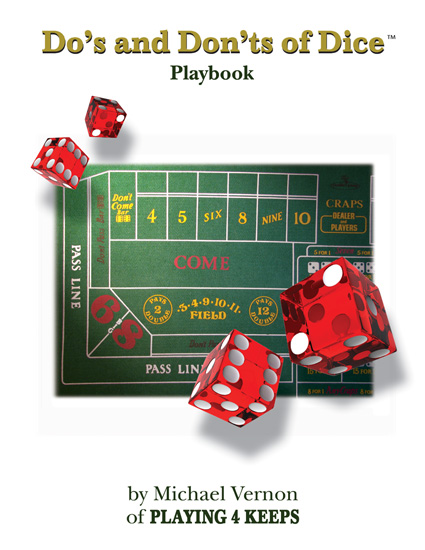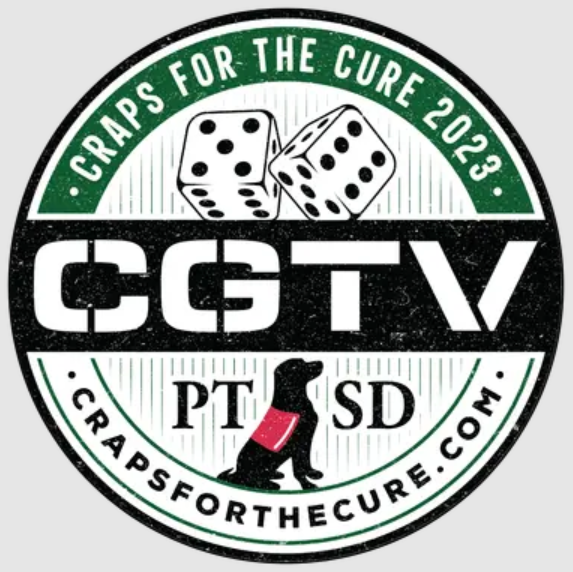|
Beyond SRR
BY: Irishsetter
Sevens to Rolls Ratio or SRR. It’s probably one of the first terms you heard when you started your dice influencing journey. I believe the phrase was coined by Sharpshooter and for the beginning dice influencer, it’s an excellent window into the potential of precision shooting. We know in the long run the seven appears “randomly” once out of every six throws, an SRR of 1:6. If a shooter can influence the dice in a way that reduces the appearance to say, once every seven rolls, a SRR of 1:7, it certainly seems as if an advantage can be gained on a game which has previously been “unbeatable.”
SRR is, and probably will always be, the first benchmark for the aspiring dice influencer. And it’s a great starting point. Unfortunately, that’s all it is. It’s merely an indicator of success. You’ll know you’re reducing the appearance of the seven, but you won’t know what number or numbers you’re rolling in the sevens absence. Tracking your SRR won’t help you determine whether you’re maintaining the axial relationship of the dice. (This is commonly referred to as keeping the dice “on axis.”) Nor will SRR indicate whether you’re successfully overcoming the house edge on the wagers you’re making. SRR really gives us just a whisper of the necessary information we need to successfully beat the game of craps. If you were to think of SRR in terms of the weather, it would be equivalent to sticking your arm out the window to determine the temperature. You can determine if it’s hot, or warm, or cold, but you can’t ascertain the specific temperature, nor can you predict if will rain or snow in the immediate future.
Life after SRR. So if SRR isn’t “All That”, what is? Once shooters recognized the flaws in simply tracking SRR, they began to seek better tracking tools. “Dice control” itself has been around for decades, perhaps centuries, but many of the measurements that shooters use today were developed in just the past few years. It’s amazing, but simple concepts like practicing with two different colored dice were unheard of when I first explored “dice setting” in the late 90’s.
At this point in time, we’re really moving from the infancy stage of modern dice influencing into a more fully developed stage. Let’s look at a few methods that journeymen (and journeywomen!) dice influencers use these days to further develop their skill and consistency.
Signature Numbers. Tracking signature numbers has been around almost as long as SRR. A shooter who is successfully reducing the appearance of the seven should see a positive variance in the remaining possibilities. They tend to refer to the two or three box numbers most positively influenced as their “signature numbers.” The more effective the shooter is at avoiding the seven, the more significant the variance will be on specific numbers. This is an excellent way to get a general idea about which number or numbers a shooter should be wagering on. Tracking signature numbers isn’t perfect, but it’s not a bad way to go either. In fact, instead of SRR, some shooters track their Sevens to Signature Numbers Ratio.
(Note: Many shooters track their throws manually on paper, or using an excel spreadsheet. You can also use a free on line tool called Toss Track .)
On Axis Percentage. The basic theory of dice influencing is based on the idea that a shooter will toss the dice in a manner that the dice will maintain their relationship from the beginning of the throw to when they come to rest. In doing so, instead of 36 possible outcomes, there will be only 16. The best way to track on axis percentage for the sevens avoidance sets (V-3, V-2 and crossed 6’s) is to toss two different colored dice. This way you know which numbers should not appear on each of the colored dice. A shooter who can keep both dice on axis 50% of the time or better is going to see some extraordinary data results. Analyzing your on axis results has other benefits. I not only track my combined on axis percentage, but also for each die individually. When I’m practicing, if I see that one die in particular is off axis, it indicates that perhaps I’m getting sloppy with my grip and that I should re-focus or make an adjustment.
Tracking Multiple Pre Sets Simultaneously. This concept was devised by one of the members of the Precision Shooter Dice Forum. It’s so simple, yet just brilliant. Using Excel, this shooter developed a method to track his outcomes for two dice sets so he would know the outcome of one toss for both the V-3 and V-2. That’s right! Throw the dice just once, but you’d get the outcome for two different sets! Simple but amazing.
(Note: you can also accomplish this manually by simply marking the dice with a Sharpie.)
Calculating Your Advantage. A shooter who is consistently successful in reducing the appearance of the seven is not necessarily guaranteed profit in the long run. Why? Because most shooters tend to make bets on wagers they don’t actually have a demonstrated advantage. This is where Wincraps comes in. Wincraps is a craps simulator. One of the many outstanding features is a “roll your own dice” function. Using this software, a shooter can simulate casino play on their practice rig with actual wagers and payoffs. At any point, the software can determine the shooters overall advantage over the house, and, more importantly, individually on each of the wagers they’ve made. For instance, if a shooter uses the V-3 set and always make a hard 6 and hard 8 bet, Wincraps will tell them if they’re really overcoming the 9.09% house advantage. This software is an excellent way to scrutinize your betting patterns.
These are just a few examples of ideas and tools that dice influencers are employing to become more proficient and consistent shooters. In just a few short years, savvy shooters have taken the basic concept of SRR and expanded upon it to get better data. More importantly, better data can mean more efficient and consistent results at the tables. If you have questions or comments about the concepts illustrated above, feel free to email me.
Best of luck to you at the tables!
Irishsetter is webmaster of dicesetter.com and has been practicing the art of dice influencing since the late 90’s. You can join ‘Irish’ and many others who are active in the dice influencing community on the Precision Shooter Dice Forum or you can email him at irishsetter@casino.com
Click Here to return to the list of prior articles ...
|
 |










